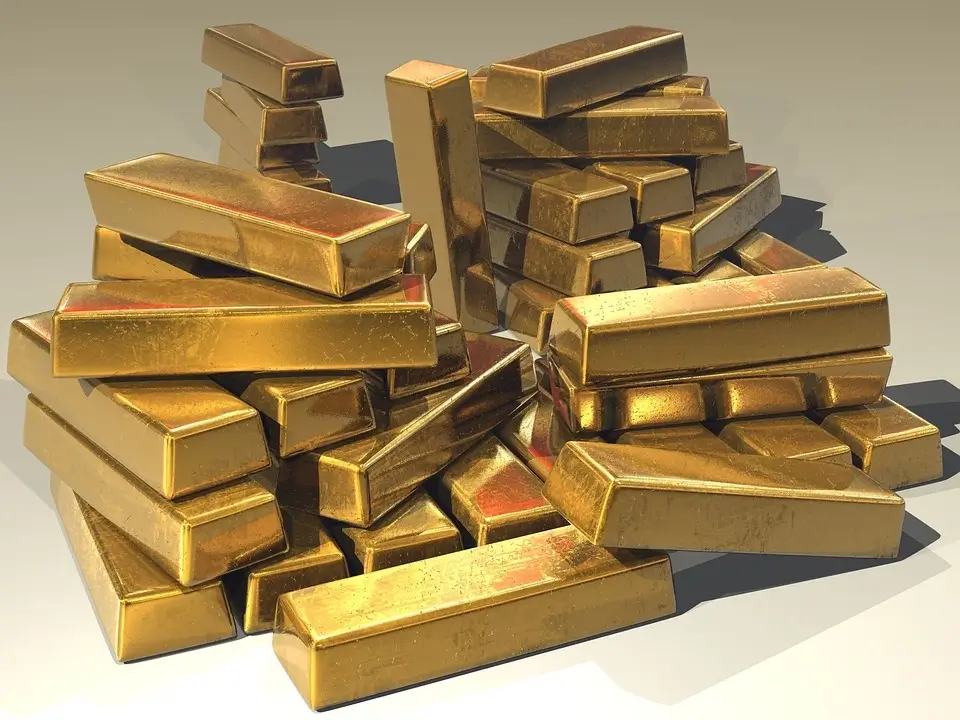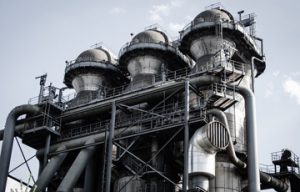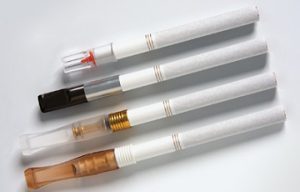Gold Recovery with Activated Carbon
Gold holds a special place in human history and modern economies, renowned for its intrinsic value, beauty, and enduring allure. However, the journey from the ore in the ground to the gleaming gold in our jewelry or investment portfolios is a complex one. Gold recovery is the pivotal process that bridges this gap, enabling us to harness the precious metal's potential. Whether extracted from mines or recycled from electronic waste, gold recovery is essential for sustaining the global supply and reducing the environmental impact of mining.
Activated carbon, often referred to as the unsung hero of gold recovery, plays a critical role in this intricate process. This unassuming black substance possesses remarkable properties that allow it to selectively capture and concentrate minuscule gold particles from complex solutions. But how does activated carbon achieve this remarkable feat, and what are the different applications and challenges associated with its use in gold recovery? In this blog post, we will delve into the fascinating world of gold recovery and explore the vital role activated carbon plays in this journey.
Throughout this post, we will unravel the science behind activated carbon's exceptional adsorption properties and its varied applications in the gold recovery process. We will also discuss different types of activated carbon, the methods for regeneration, and showcase real-world case studies illustrating its efficacy. Furthermore, we will address the evolving landscape of gold recovery, including emerging trends and innovations. So, fasten your seatbelts and prepare to embark on a journey through the intricate realm of activated carbon and its pivotal role in gold recovery.
What is Activated Carbon?
A . Definition and Explanation of Activated Carbon
Activated carbon, also known as activated charcoal, is a versatile and highly porous material with a wide range of applications. It is primarily derived from carbon-rich sources such as coconut shells, wood, peat, or even coal. What sets activated carbon apart from regular charcoal is its unique structure, which is characterized by an extensive network of pores and a massive surface area. These pores are created through a process called activation, where the carbon source is subjected to high temperatures and controlled oxidation. The resulting structure consists of countless micro- and mesopores, making it exceptionally effective for adsorption – the process of binding molecules or particles to its surface.
B. Overview of How Activated Carbon is Produced
The production of activated carbon is a carefully controlled process. Initially, raw carbonaceous material, such as coconut shells or wood, is heated in the absence of air at temperatures that can exceed 1,000 degrees Celsius. This thermal treatment drives off volatile compounds and activates the material, creating a labyrinth of pores within the carbon structure. There are two primary methods for activation: physical and chemical. Physical activation involves using gases like steam or carbon dioxide to create the pores, while chemical activation uses chemicals like phosphoric acid to achieve the same effect. The choice of activation method and source material can influence the properties and suitability of activated carbon for specific applications.
C. Unique Properties for Adsorption
Activated carbon's most distinguishing feature is its incredible adsorption capacity. Thanks to its extensive pore structure, it offers a vast surface area for the physical and chemical attraction of various substances. This unique property allows activated carbon to selectively adsorb, or collect, a wide array of impurities, including organic compounds, volatile gases, and even trace elements like gold. This adsorption phenomenon is driven by the Van der Waals forces, electrostatic interactions, and chemical affinities between the carbon surface and the target molecules. It is this remarkable capacity that makes activated carbon indispensable in numerous industries, including water treatment, air purification, and, as we'll explore in this blog post, gold recovery processes, where its ability to capture minuscule gold particles from complex solutions is truly exceptional.
Activated Carbon in Gold Recovery
A.Role of Activated Carbon in Gold Extraction
Activated Carbon in Gold Recovery plays a pivotal role in the extraction of this precious metal, serving as a powerful ally in the journey from ore to refined gold. Gold recovery often involves complex solutions, and activated carbon steps in as a specialist adsorbent. As ore is crushed and turned into a slurry, gold particles become suspended in a liquid mixture. It's at this stage that activated carbon springs into action. When introduced into the slurry, it acts like a magnet for gold, attracting and capturing the minute gold particles, effectively pulling them from the solution.
B. Adsorption Process
At the heart of activated carbon's effectiveness in gold recovery lies the fascinating process of adsorption. Adsorption is not to be confused with absorption. It involves the adhesion of molecules or particles to a surface without being assimilated into the adsorbent's structure. Activated carbon's extensive network of pores, both micro and mesopores, creates an immense surface area, making it highly attractive for adsorption. Gold ions and particles present in the solution are drawn to these tiny pores through a combination of attractive forces, including Van der Waals interactions, electrostatic forces, and chemical affinities.
C. How Activated Carbon Captures Gold from Solutions
Activated Carbon in Gold Recovery captures gold from solutions by exploiting its selectivity and affinity for this precious metal. As the gold-laden solution flows over the activated carbon bed, the gold ions and particles are adsorbed onto the carbon's surface. The porous structure provides ample room for gold to cling to the carbon, effectively removing it from the solution. This capturing process can continue until the activated carbon bed is saturated with gold. Once the carbon is fully loaded, it's separated from the solution, and the gold is subsequently recovered through a process of desorption. This method offers an efficient and environmentally responsible means of extracting gold from complex mixtures, making it a cornerstone in the world of gold recovery processes.
Types of Activated Carbon Used in Gold Recovery
A. Overview of Different Types of Activated Carbon
In the realm of Activated Carbon in Gold Recovery, a variety of activated carbon types find their place, each with its unique characteristics and applications. The choice of activated carbon is critical in optimizing gold recovery processes. The primary types include granular activated carbon (GAC), powdered activated carbon (PAC), and carbon nanotubes.
Granular Activated Carbon (GAC), with its larger particle size and robustness, is widely used in the gold mining industry. Its sturdy structure allows it to withstand the abrasion and attrition common in mining applications. Powdered Activated Carbon (PAC), as the name suggests, is finely ground carbon and offers a high surface area, making it suitable for adsorption in water treatment processes. Carbon nanotubes, with their nanoscale dimensions, are an emerging option, showing promise in enhancing selectivity and efficiency in gold recovery.
B. Their Specific Applications in Gold Recovery
The application of these different types of activated carbon in gold recovery is tailored to the specific needs of the industry. Granular activated carbon is often employed in the carbon-in-pulp (CIP) and carbon-in-leach (CIL) processes, where it is used in large tanks to adsorb gold from ore slurries. Powdered activated carbon, on the other hand, is ideal for carbon-in-column (CIC) systems, well-suited for the treatment of pregnant leach solutions. Carbon nanotubes, while still in the experimental stage, hold the promise of revolutionizing gold recovery by offering an even more efficient adsorption medium.
C. Pros and Cons of Various Activated Carbon Types
Each type of activated carbon comes with its own set of advantages and drawbacks. Granular activated carbon is known for its durability and ease of handling, but it may have limitations in terms of surface area. Powdered activated carbon excels in its high surface area, making it excellent for rapid adsorption, but it can be more challenging to separate from the solution. Carbon nanotubes, although promising in terms of efficiency, are still being researched and can be costlier than traditional options.
In the dynamic field of gold recovery, the choice of activated carbon type must align with the specific requirements of the application, balancing factors like adsorption efficiency, cost-effectiveness, and ease of use. By understanding the nuances of these activated carbon variants, gold recovery processes can be optimized for enhanced performance and sustainability.
Gold Recovery Applications
A. Gold Mining Industry and the Use of Activated Carbon
The gold mining industry stands as one of the foremost domains where Activated Carbon in Gold Recovery shines. Gold extraction from ore involves intricate processes, often beginning with the crushing of rock and concluding with the recovery of minuscule gold particles. The introduction of activated carbon into this journey revolutionized the industry. In gold mining, activated carbon plays a pivotal role in two primary processes: carbon-in-pulp (CIP) and carbon-in-leach (CIL). These methods rely on the use of activated carbon to adsorb gold from ore slurries. The carbon acts as a reliable, selective collector of gold particles, contributing to high gold recovery rates.
B. Water Purification and Environmental Applications
The utility of Activated Carbon in Gold Recovery isn't confined solely to the gold mining sector; it extends its reach to environmental applications, particularly in water purification. In the realm of environmental protection, activated carbon serves as a potent tool for removing not only impurities but also trace gold particles from aqueous solutions. It's not uncommon for water bodies near mining operations to contain minute traces of gold, which can have ecological implications. By employing activated carbon, these trace gold particles can be effectively captured, reducing the environmental impact and ensuring cleaner water sources.
C. Other Industries Where Activated Carbon Is Utilized for Gold Recovery
Beyond gold mining and environmental applications, activated carbon finds utility in various other industries for gold recovery. These industries can include electronics recycling, where activated carbon aids in the recovery of gold from electronic waste, and metallurgical operations, where it is used to extract gold from ore. The versatility of activated carbon extends to chemical and pharmaceutical processes where trace gold impurities need to be removed to ensure the highest product purity. Its adaptability across industries is a testament to its role as a key player in the realm of gold recovery, offering effective and sustainable solutions in diverse applications.
Conclusion
Activated Carbon in Gold Recovery is an unsung hero that has transformed the landscape of gold extraction and made a significant impact on various industries. The intrinsic value of gold has driven a continuous quest for efficient recovery methods, and activated carbon has emerged as a linchpin in this pursuit. Its unique adsorption properties, stemming from an intricate network of pores, enable it to selectively capture and concentrate gold particles from complex solutions.
From the gold mining industry to environmental applications, the role of activated carbon in gold recovery is undeniable. It has revolutionized processes such as carbon-in-pulp and carbon-in-leach, ensuring high gold recovery rates and sustainable mining practices. Additionally, in water purification and environmental protection, activated carbon plays a vital role in minimizing the environmental impact of mining activities and maintaining the purity of water sources.
The adaptability of activated carbon doesn't end there. It extends its reach to electronics recycling, metallurgical operations, and various other industries where gold recovery is paramount. Its efficiency, coupled with a commitment to sustainability, positions activated carbon as a cornerstone of modern gold recovery processes.
As we conclude this exploration of Activated Carbon in Gold Recovery, it's clear that its significance cannot be overstated. It has not only enhanced the efficiency and sustainability of gold extraction but has also reduced the environmental footprint of this valuable industry. Looking forward, as technology continues to advance, it's likely that activated carbon will remain a central player in the ongoing quest for efficient and eco-friendly gold recovery methods.














Comments are closed!